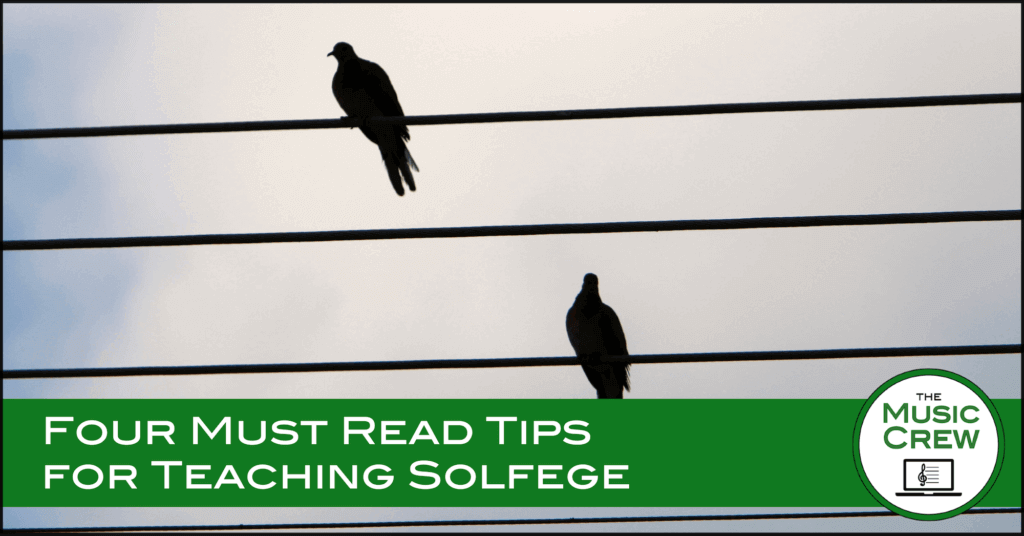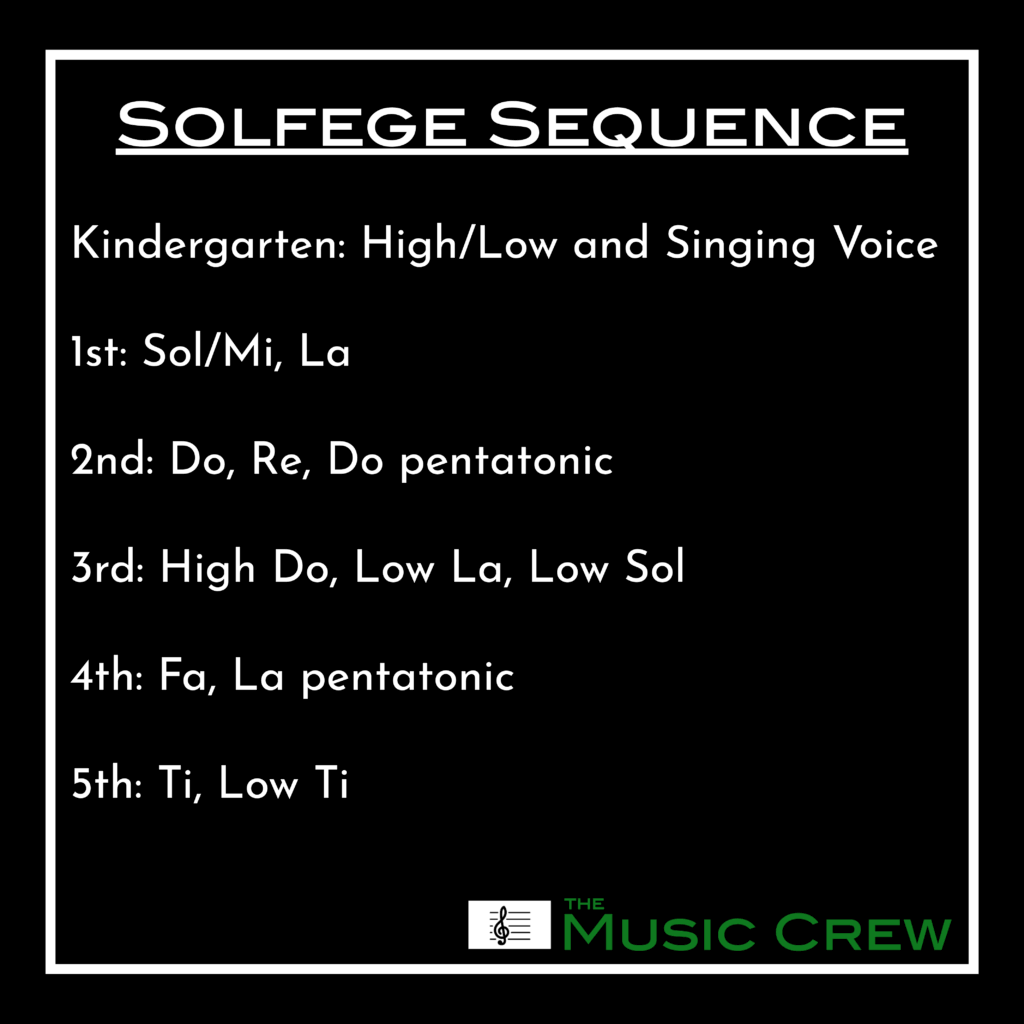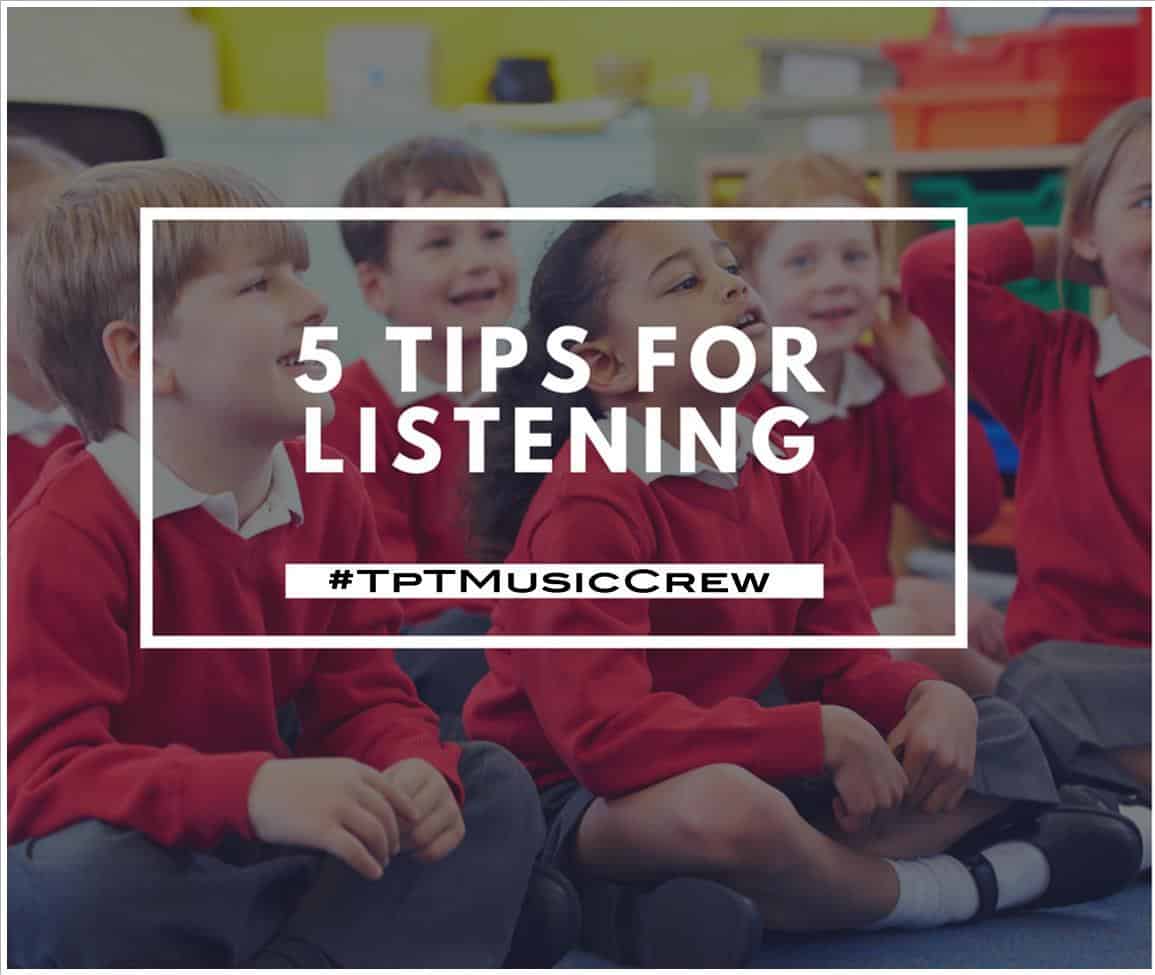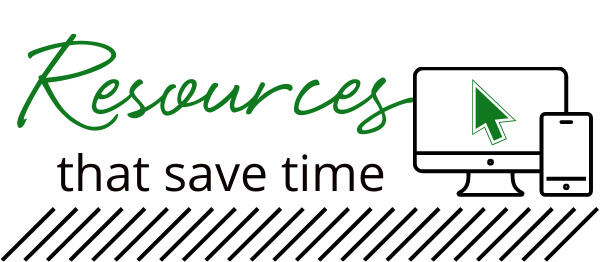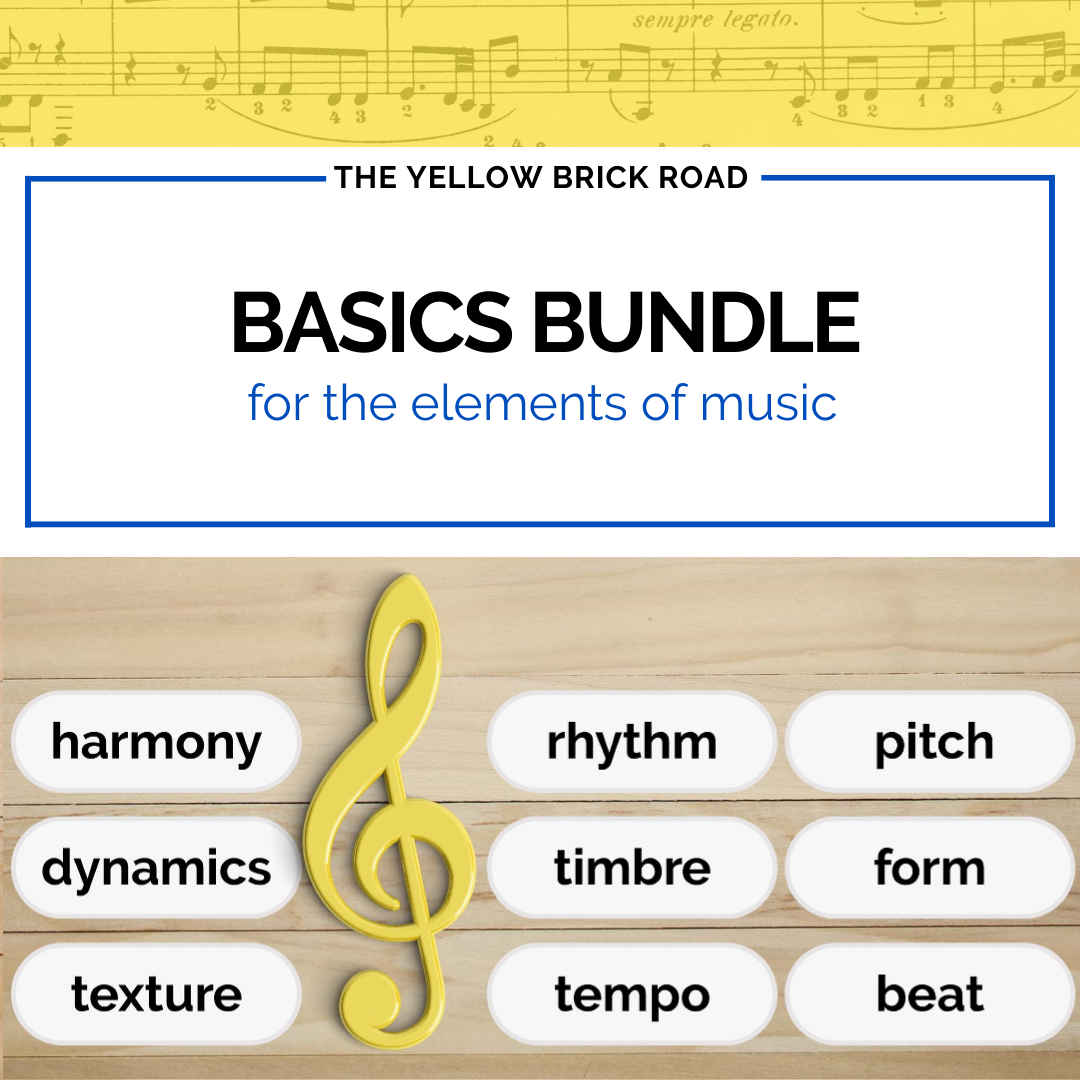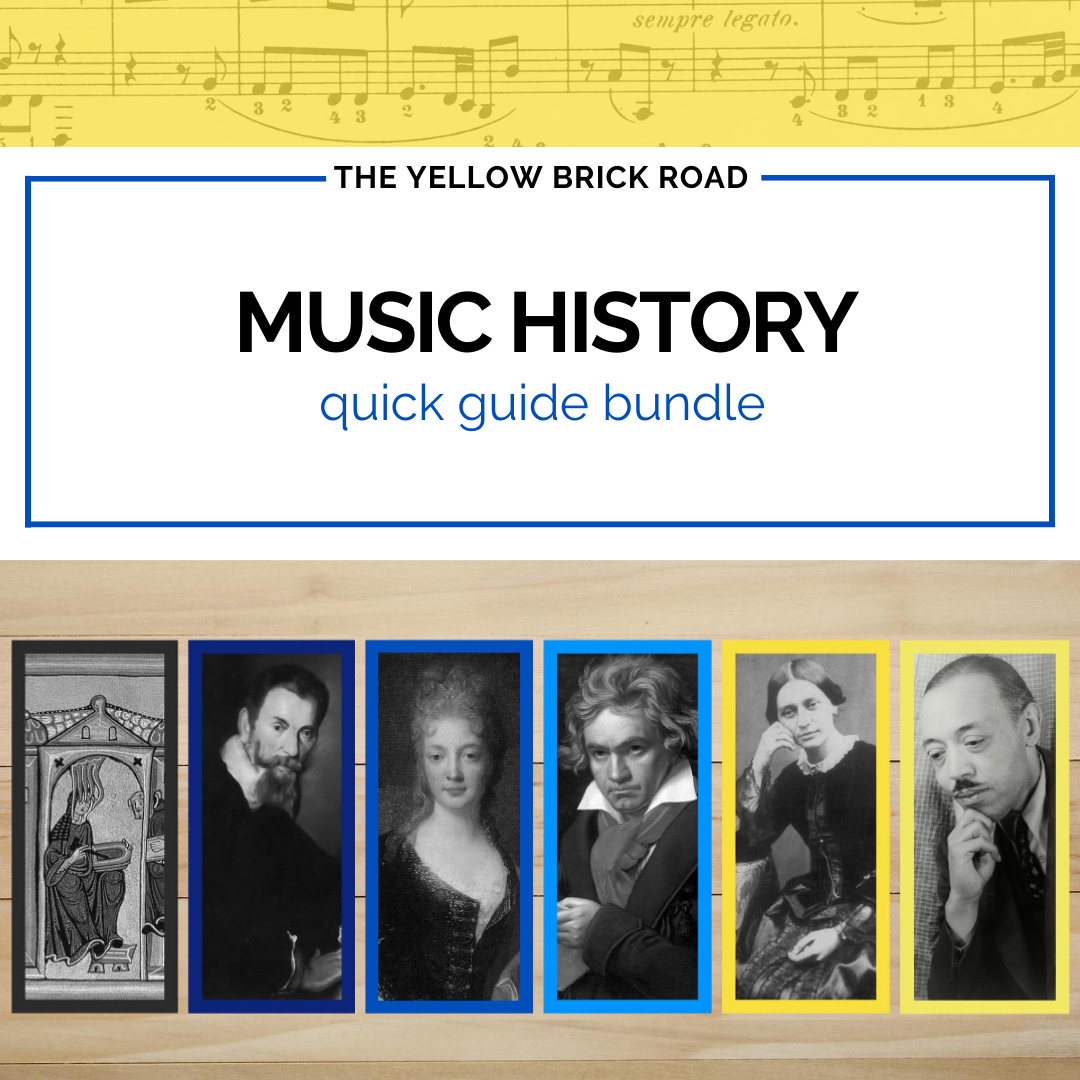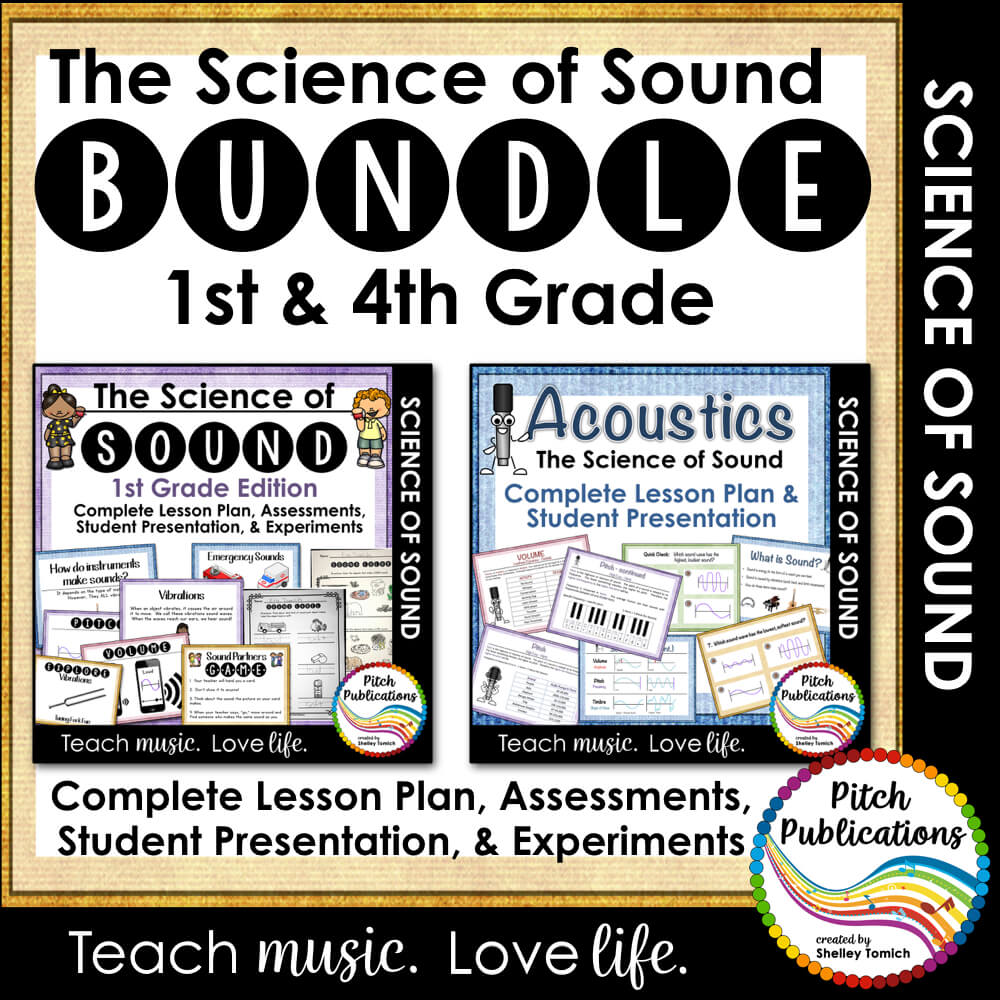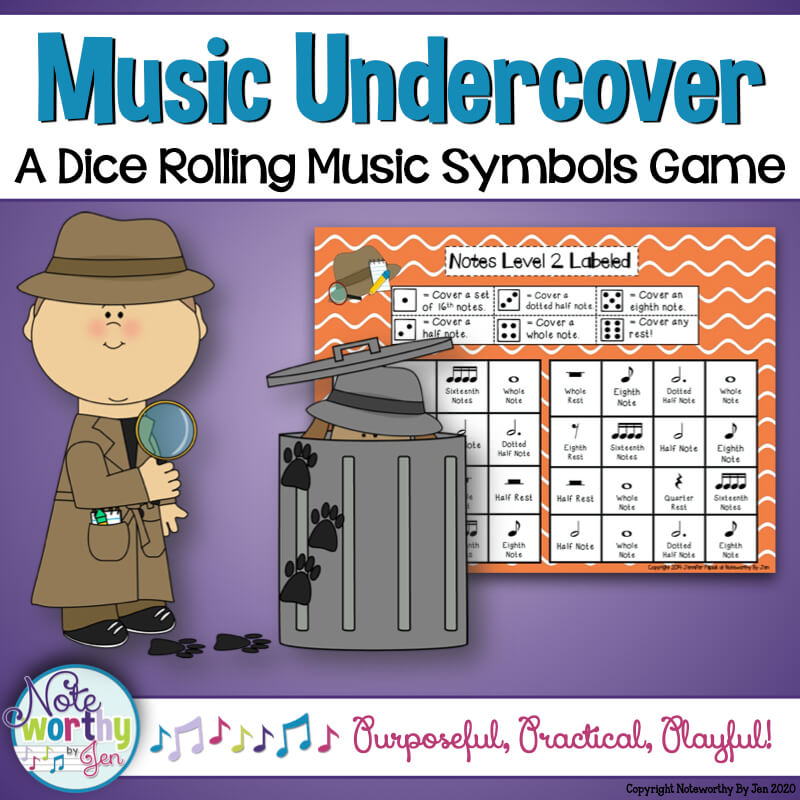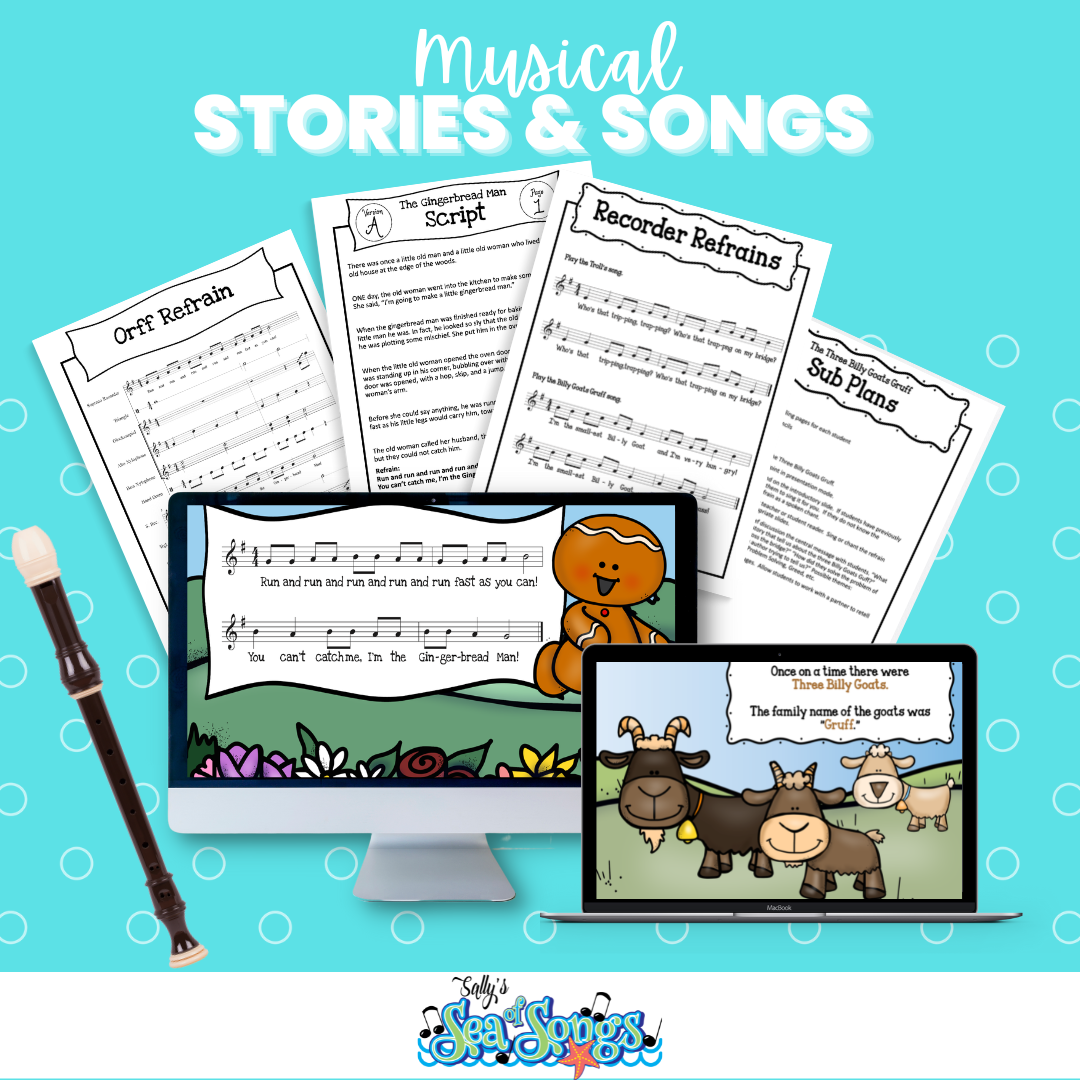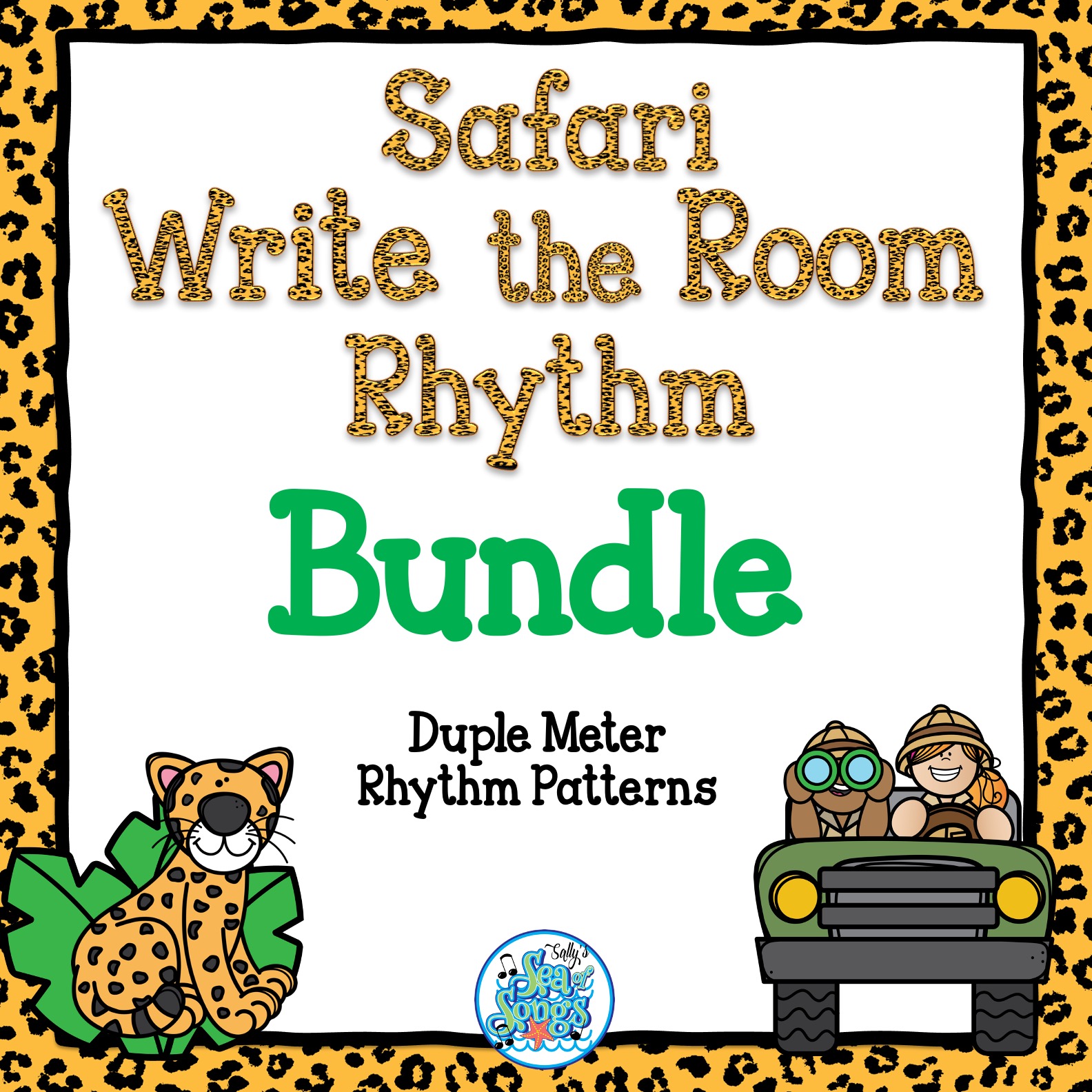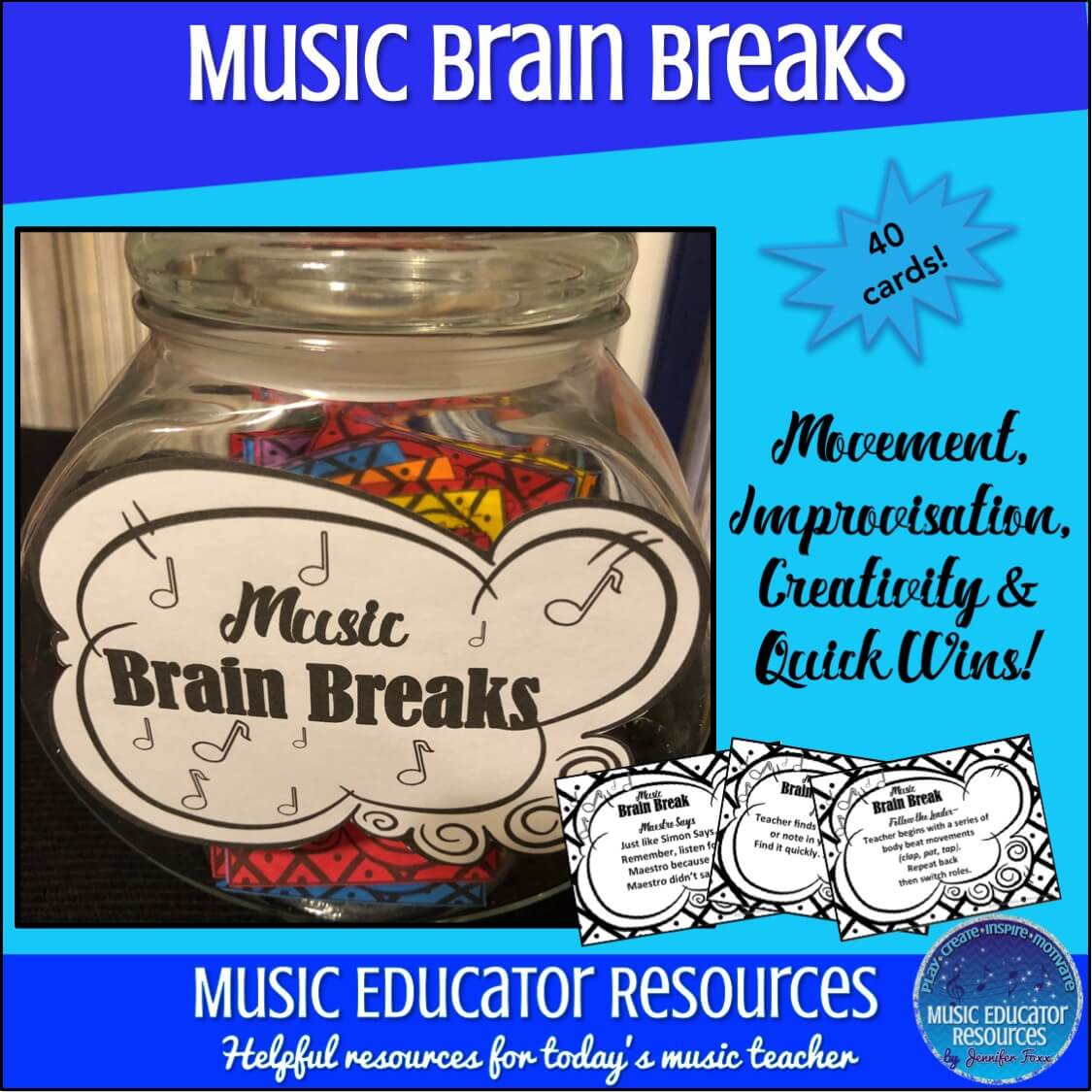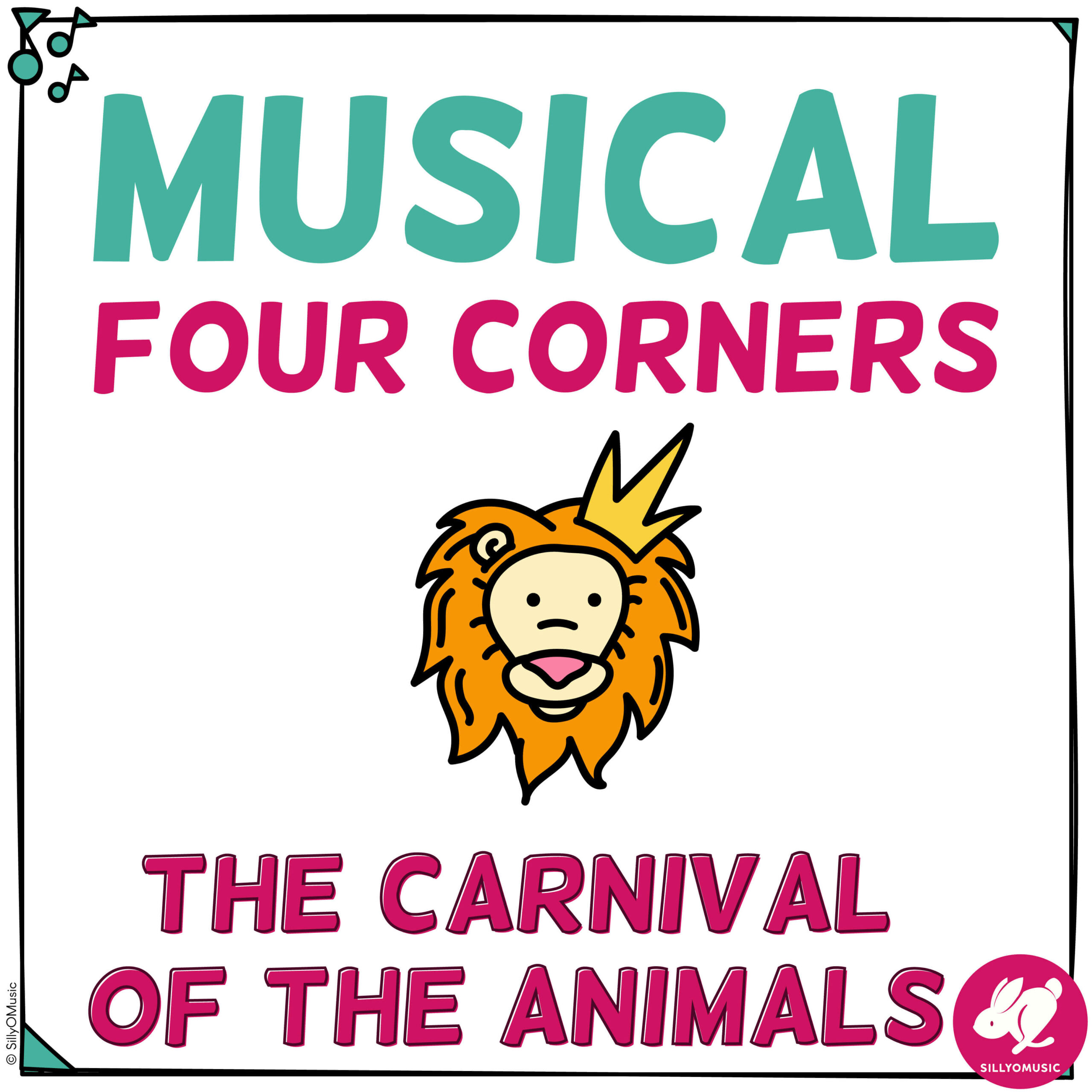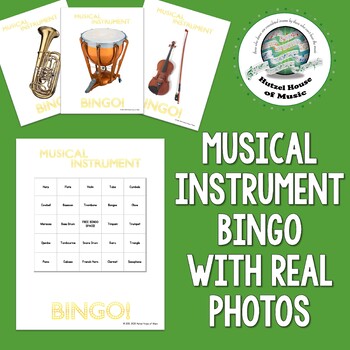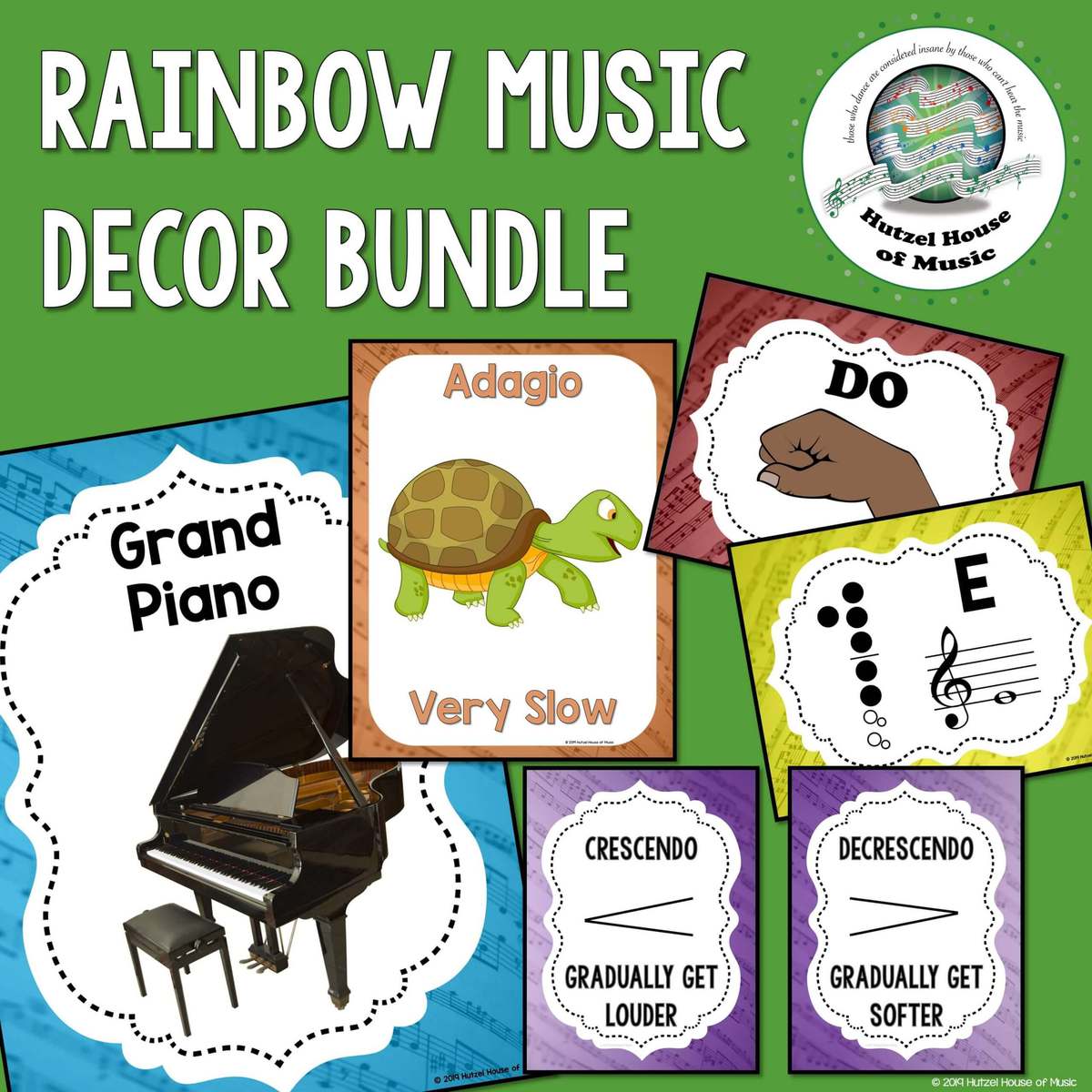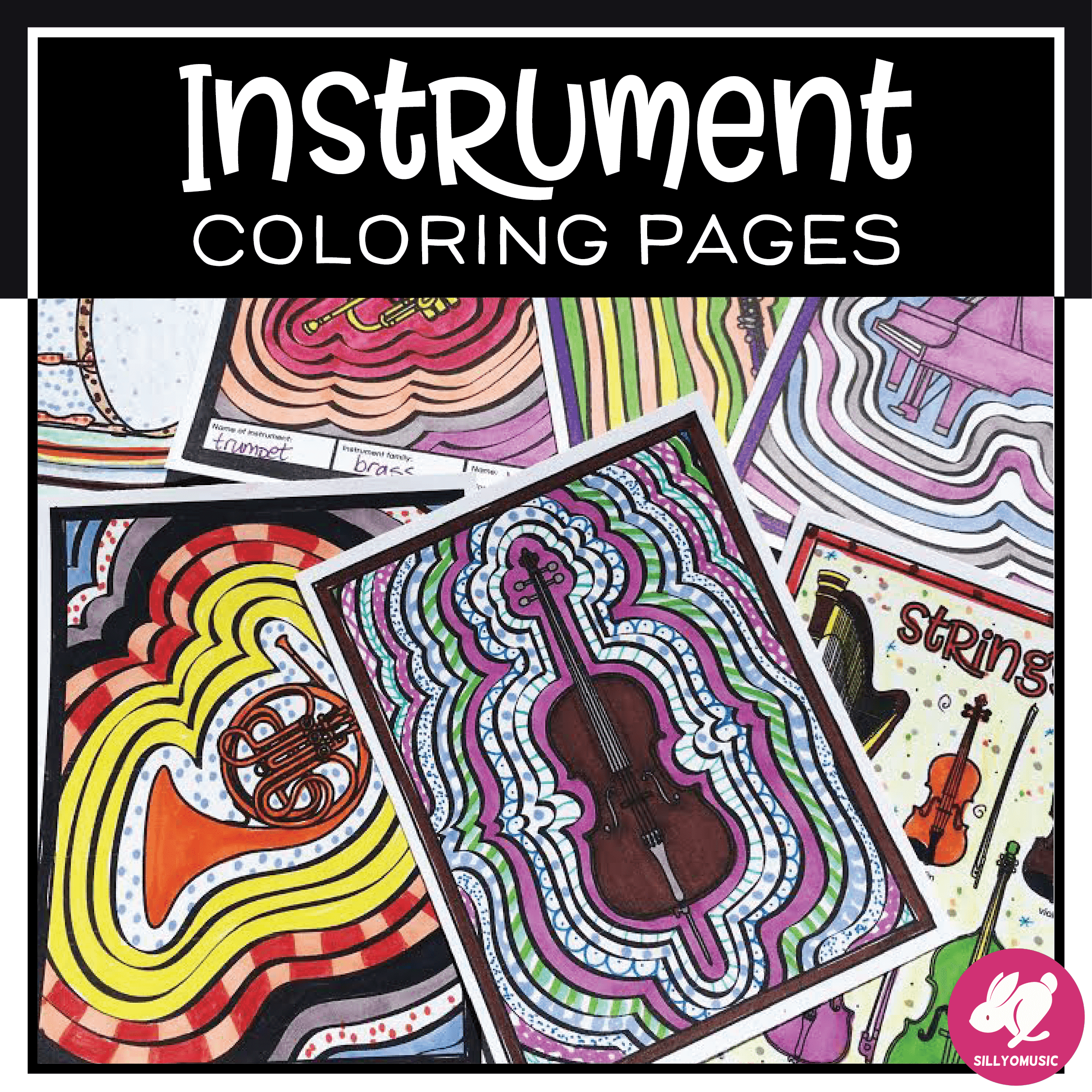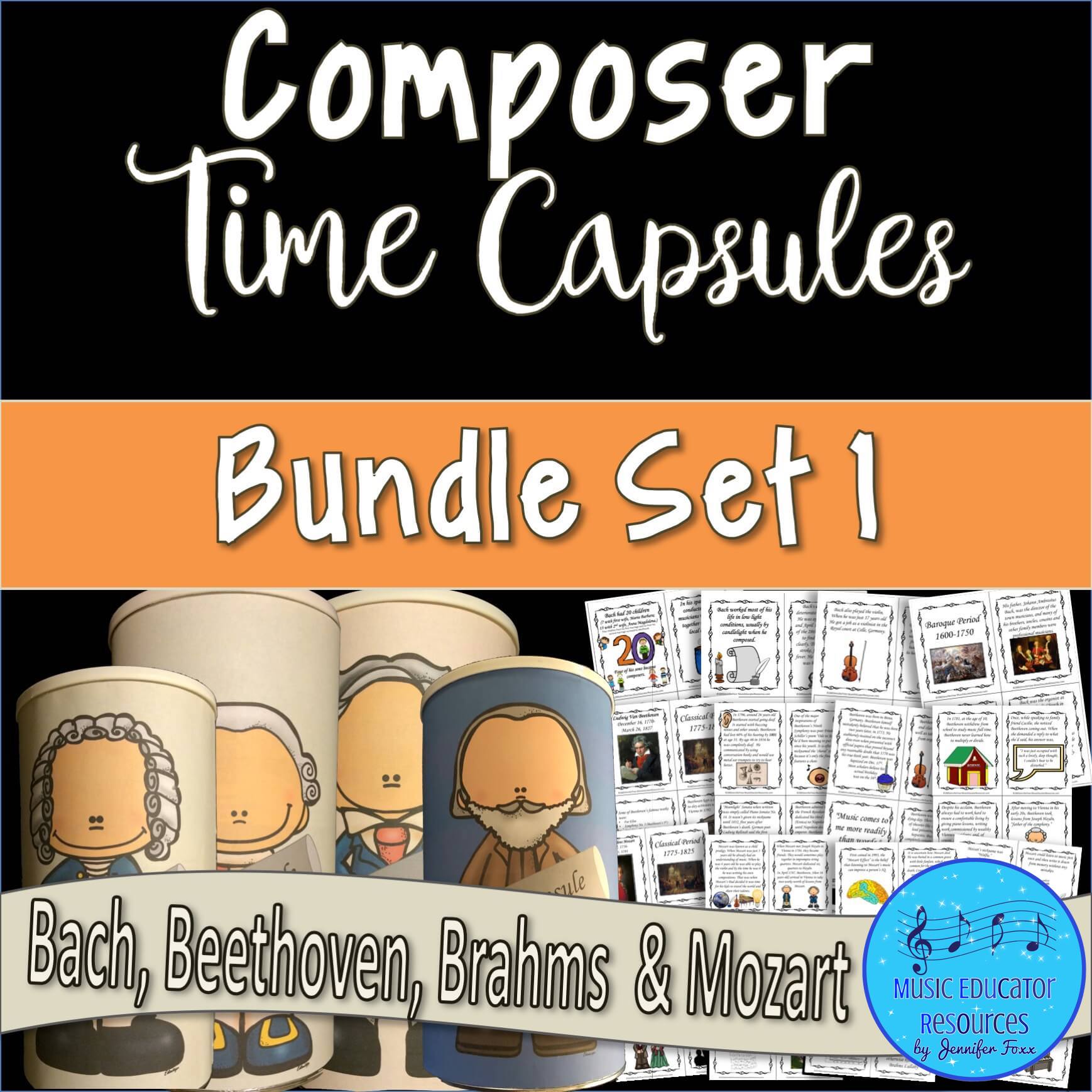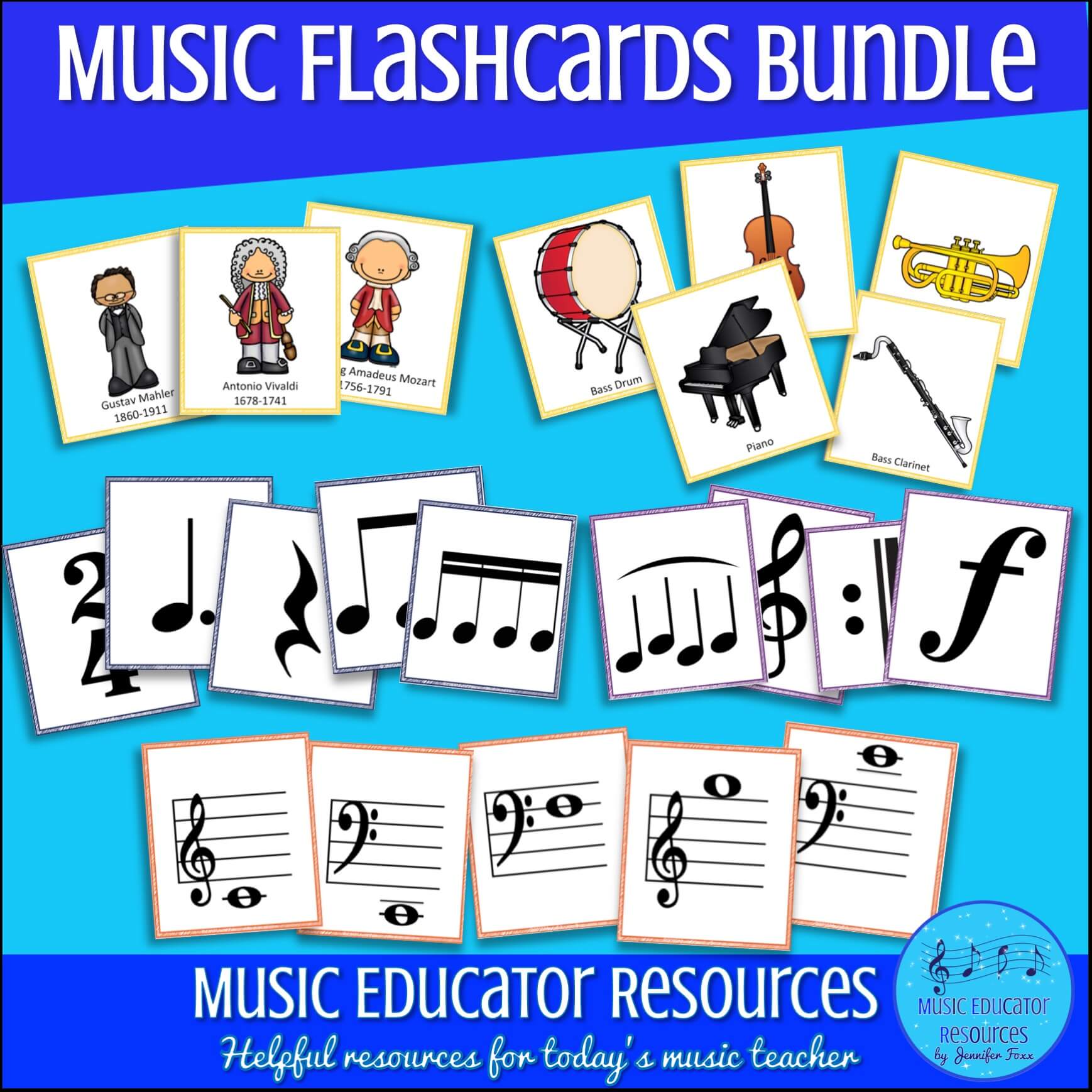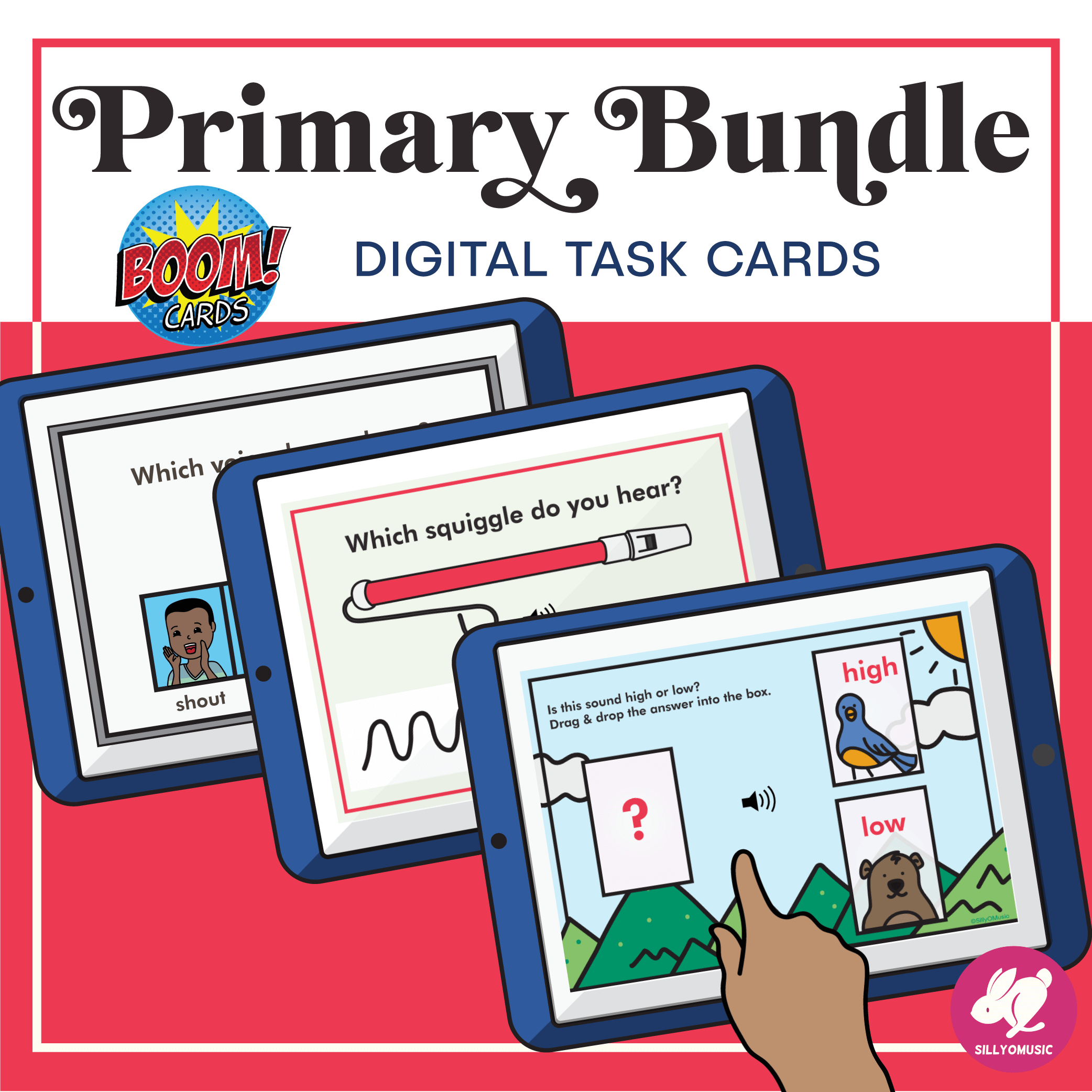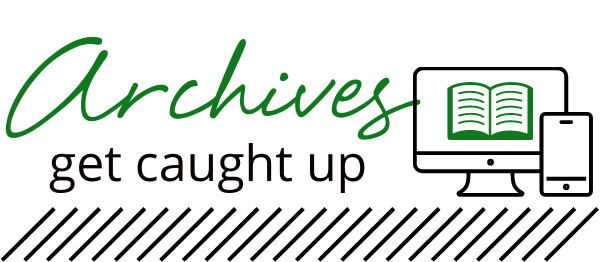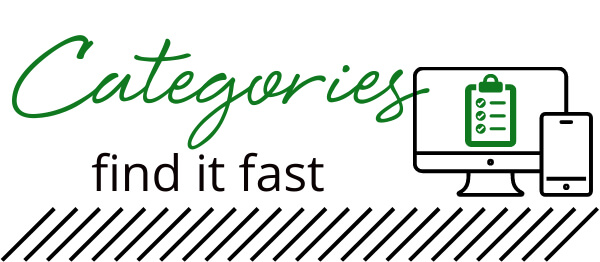Don’t Move Too Fast
A big question is why are you teaching solfege? There is a big difference between knowing some random syllables and being able to apply them. If introduction is your goal, then it’s ok to move quickly. But if you want students to be able to use the syllables, understand the relationship between the notes and be able to apply them, then time is your friend.
I think of solfege like I do rhythm. It’s a long haul game. Spreading out concepts a few a year is a great idea so that students can use them well before moving on. And even then, within the year, they are spread out. However, the big goal is to not move on until your students can utilize one concept before introducing another. Teacher Tip: It’s better to not get through everything than move too fast!
Check out this broken down sample solfege sequence across the grade levels.
Utilize the Right Tools
So much of working through learning to use solfege is letting students play with the concepts. Using it in patterns, composing with it, letting students read, write and play with the new concept. Here are some great tools to look for:
Writing
- Write the Room – great for students making sure they are writing things correctly
- Worksheets that allow for copying, fill in the blank and
- Hands on manipulatives
- Felt staff, bingo chips, erasers
Reading
- Premade cards to read with known patterns
- Premade cards with unknown patterns
- Reading other student’s composed pattern
Other Ideas
- Solfege texting sticks are great for small kinesthetic movement, following a pattern, and even decoding. They are great for students that may feel less apprehensive about trying something new in a smaller way that doesn’t call as much attention to themselves. Get some free templates for solfege texting sticks here.
- Body Solfege/Hand signs – these can work just like a manipulative does in reading and writing!
Isolate Phrases to Allow for More Examples
No one said that if you are teaching La that the song only needs to contain the notes the kids know (usually Sol and Mi) and La. If you have a great song with a nice isolated pattern that has only those three notes, then GO FOR IT. This opens up so many possibilities for music. Use the song off the radio the kids know, the choir piece they are working on, or introduce a song you KNOW they will love that has the new concept isolated somewhere.
Partwork Works Wonders
Partwork doesn’t mean the kids have to sing in full blown harmony. It can mean one group holding tonic and the other singing the melody. Instruments can come into play here. It can mean decoding neutral sounds to solfege syllables, singing in canon, or singing partner songs. There are so many things you can try with partwork, but the most important idea is that it helps build independence. Students should definitely feel comfortable with a concept before trying partwork, but they don’t have to know the name for it if the activity doesn’t involve the solfege names.
Looking to learn more about teaching solfege and more ideas on what to do? Check out these three posts about teaching solfege on my blog. What’s So Fetch About Solfege Part 1



